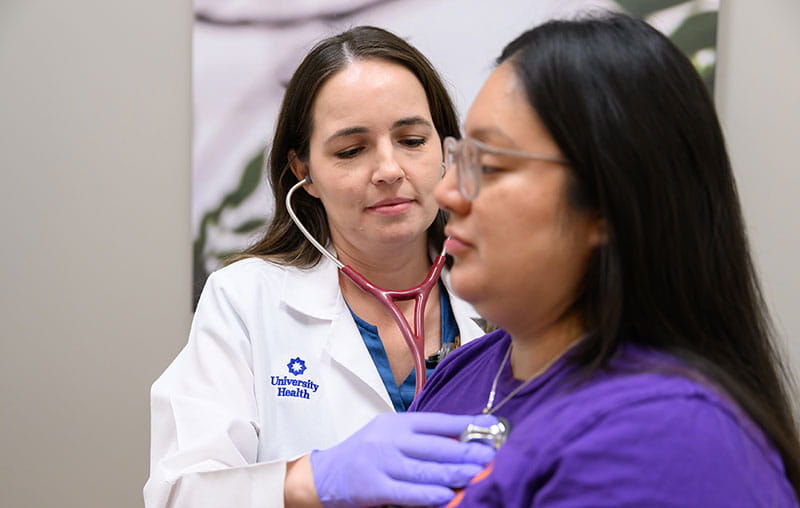For parents, anything and everything can be a reason to worry about your baby and whether you’re doing the right thing. One common fear? Exposing your little one to food allergens.
Being concerned about food allergens is a normal fear, especially if you or another one of your children has some type of allergy. Still, you know that you can’t limit your child’s exposure to potential food allergens forever.
The question remains: how can you do it safely?
Understanding Food Allergies
An allergy occurs when a person’s immune system sees a harmless substance as something dangerous and threatening to the body. When someone has a food allergy, their immune system revs up to defend the body from that specific food protein, causing an allergic reaction.
According to the American College of Allergy, Asthma and Immunology, up to 6% of people in the United States have some type of food allergy. Food allergies can affect both adults and children, but they’re more likely in babies and children.
In many cases, children can outgrow food allergies over time, but it’s also possible to develop food allergies later in life.
What an Allergic Reaction to Food Allergens Looks Like
Food allergies vary in severity. Some cause only mild reactions, while others cause life-threatening reactions that require quick action. Symptoms of an allergic reaction can include:
- Abdominal cramps
- Cough or wheezing
- Dizziness
- Hives
- Rash or skin flushing
- Shortness of breath
- Tingling or itchiness in the mouth, tongue or lips
- Trouble swallowing or a feeling of tightness in the throat
- Repeated vomiting or diarrhea
- Lightheadedness or dizziness
These symptoms typically develop quickly after exposure to a food allergen, often within 15 minutes.
The ‘Big 9’ Food Allergens
You can develop an allergy to ANY food, but there are nine types of foods that account for 90% of all food allergies in the U.S. Those nine food allergens are:
- Cow’s milk
- Eggs
- Finned fish
- Peanuts
- Sesame
- Shellfish
- Soy
- Tree nuts
- Wheat
Of those, shellfish is the most common food allergy among adults. For children, the most common food allergies are to milk, eggs and peanuts.
Does your child need an allergy specialist? Request an appointment to see a provider at our Allergy & Asthma – Babcock clinic.
Introducing Potential Food Allergens
In 2018, the American Academy of Pediatrics (AAP) reported new research indicating that delayed introduction is NOT a good strategy in most cases and actually contributed to the increased rate of food allergies. Now, the AAP recommends introducing your child to a wide variety of foods, including the common food allergens, once they begin eating solid foods.
This process is called “early introduction,” and it can help reduce the risk of developing food allergies.
This is an update to previous best practices first published in 2011. Experts initially recommended delaying the introduction of the top food allergens to babies at high risk of developing food allergies. This advice came on the heels of the increasing rate of children being diagnosed with food allergies, which grew by 50% between 1997 and 2011.
How to Safely Introduce Food Allergens
How can you safely introduce your child to potential food allergens? The AAP and Centers for Disease Control and Prevention (CDC) offer this guidance:
When: The AAP says you can begin introducing pureed foods along with breastmilk or formula when your child is between 4 and 6 months.
How: Introduce one new food (a single ingredient) to your baby in small quantities, then wait three to five days before introducing a different one. This approach allows you to monitor for any allergic reactions or symptoms that may occur and pinpoint the specific food that triggers them.
Which Ones: You can start with any single food that you’d like. The AAP and CDC don’t recommend any particular order for introducing foods to your child.
An Exception: If your baby has severe eczema, the AAP recommends talking with your child’s pediatrician about how to safely introduce specific foods like peanuts and egg. The provider may recommend testing or monitoring your child in the office during their first exposure to the food.
Another Exception: The AAP does not recommend allowing your child to regularly drink cow’s milk or fortified soy beverages until they are 1 year old. You can introduce other dairy products, such as yogurt, butter or cheese, at an earlier age.
If your baby develops mild symptoms of an allergic reaction, such as a rash or skin redness, after you’ve introduced a new food, check in with your pediatrician. Your child’s provider can recommend how to treat the symptoms and what to do next.
If your child develops more serious symptoms of an allergic reaction, such as coughing, difficulty breathing, extreme fussiness, repeated vomiting or unusual sleepiness, seek immediate medical attention.
Pediatric Allergy Care at University Health
Still have concerns or questions about introducing your child to potential food allergens? Request an appointment with our allergy specialists by calling 210-644-3700 or ask your child's pediatrician for a referral to our Allergy & Asthma – Babcock clinic.
Our team of allergists at Allergy & Asthma – Babcock will walk you and your family through evaluating and managing your child's allergies, whether they're dealing with seasonal, food or medication-related allergens. They will help provide counseling and testing to determine if they have an allergy, as well as create an effective treatment plan to help your child feel better and enjoy life with few allergy symptoms.





